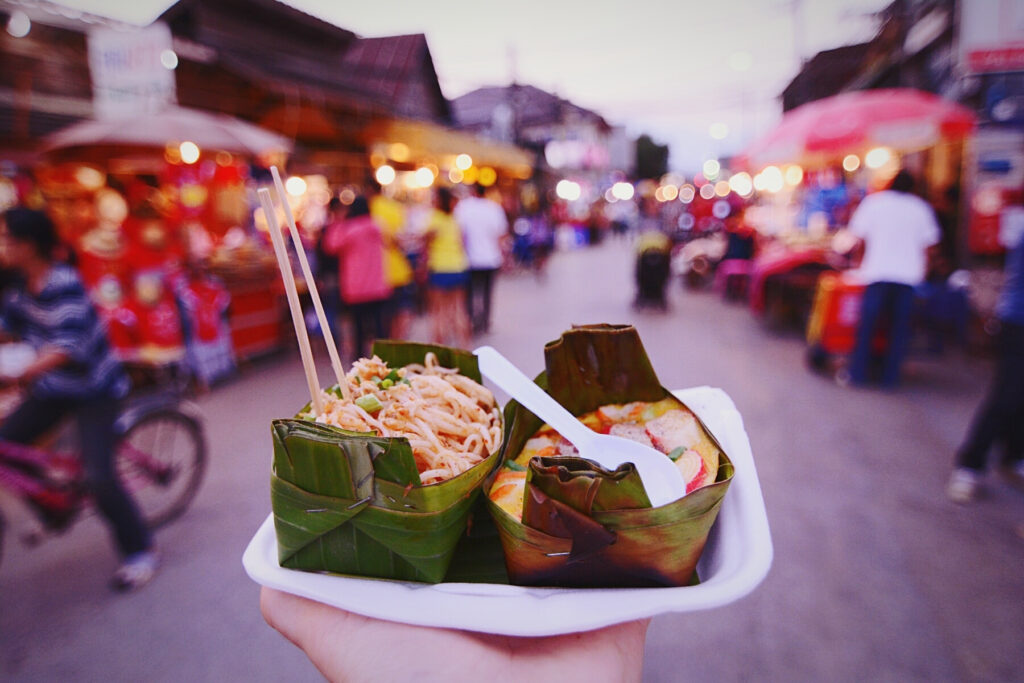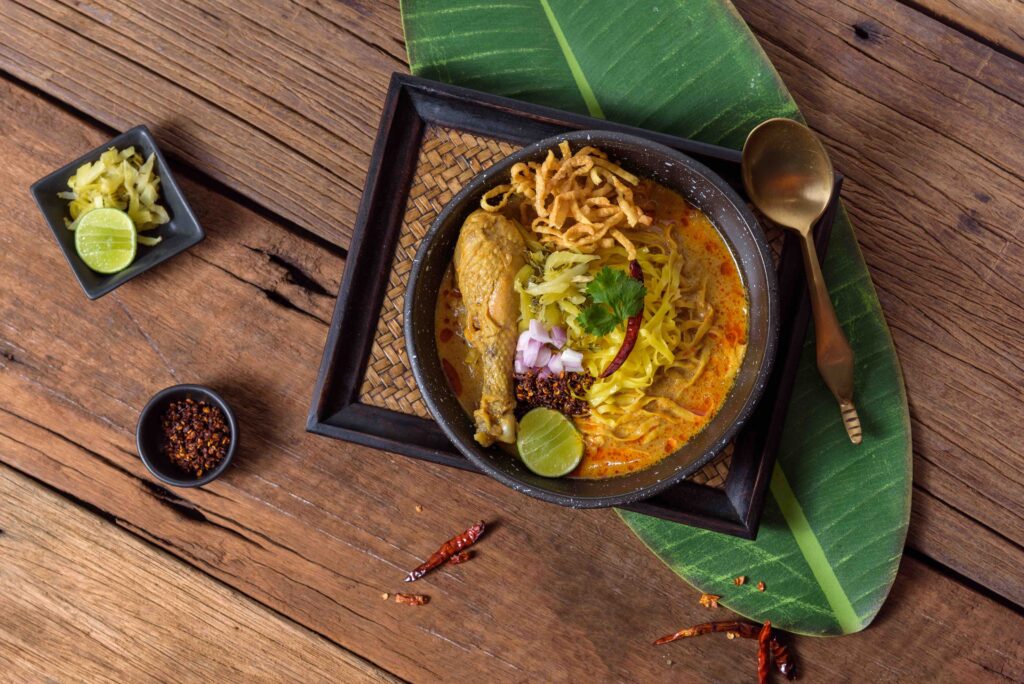When I was six, my uncle returned from an overseas posting with the United States Air Force. He regaled us with tales of Thailand: an enchanting place known as “the land of smiles,” with friendly people, turquoise water, pristine beaches and the best food he’d ever tasted. For a kid in landlocked Saskatchewan, it sounded like paradise. In that moment, I vowed that one day I, too, would go to this magical place.
Forty-five years later, I finally fulfilled that promise to myself on a two-week Thai journey. I devoured coconut curry, fed rescued elephants and survived white-knuckled tuktuk rides—though not without a keen sense of caution. In the decades since my uncle’s visit, the damaging effects of over-tourism have taken their toll on popular destinations throughout Southeast Asia. Thankfully, I discovered in Thailand a nation at the forefront of sustainable tourism.
The spirit of sustainability seems to surround you in Thailand, from government initiatives to the local noodle stand down the street. “Sustainability is of the utmost importance as we strive to preserve both natural settings and cityscapes,” says Santi Sawangcharoen, director of the Tourism Authority of Thailand (TAT). “More and more travellers are opting for planet-first options—and prioritizing destinations that provide plentiful sustainable choices.” Thailand has banned smoking on beaches, reduced single-use plastics, and temporarily closed popular sites like Maya Bay, the filming location of Leonardo DiCaprio’s 2000 movie, The Beach. Such efforts have restored those beaches and fostered the recovery of reefs, vegetation and sea life.
Private businesses are also investing in more eco-minded measures. Many Thai resorts, eateries and tourist sites build with recycled materials, use ingredients grown on-property, and employ renewable energy systems. The Green Bangkok 2030 project also offers optimism through the next decade. The frenetic city is in constant motion: motorcycles, tuk-tuks, cars, delivery trucks, nightlife, music and the pulse of 12 million people. As Sawangcharoen says, the initiative is “rewilding the city with significantly more green space and reducing emissions by 40 percent within the decade.” By the end of the program, nearly a third of the city’s total area will be covered with trees. Think fewer neon-soaked streets, more family-friendly neighbourhoods.

In Thailand, my inner child was hoping for magic, while my adult self just wanted to taste some incredible local dishes! It seems everywhere I went, steam from gigantic vats of food rose into the air from sunrise to sunset, while the spicy smells of market stalls enveloped me like a warm hug. Over the past decade, Bangkok has consistently ranked in the top-20 culinary destinations in the world, with historic Chiang Mai not far behind.
But areas in the south, like beachy Phuket and bucolic Krabi, are also garnering attention—not only for seafood-rich regional cuisine, but also their progressive approach to lessening waste and cultivating native ingredients. No matter the region, you’re going to eat noodles—lots of them—for many meals. I often ate them for breakfast. Along with sticky rice (also plentiful), menus typically include spicy papaya salad with salted crab, panang curries and creamy iced tea or cold coffee. In Bangkok, you can spend very little on immensely satisfying food, from 55 Thai baht ($2 CAD) for a bowl of noodles in an open-air space, or substantially more at a Michelin Guide Bib Gourmand-rated restaurant. The rating is awarded to restaurants that serve high-quality food at reasonable prices.
The Michelin-rated Supanniga Eating Room is a perfect example of Thailand’s high-low dualism: an elevated dining experience comprised of traditional recipes from the owner’s grandmother. For two people, my bill for four dishes—including Pon Yang Kham steak (Wagyu crossed with locally raised Charolais beef ), wine and cocktails—rang in at 1,791 baht, or about $65 CAD. A similar meal in Edmonton, Saskatoon or Winnipeg could easily set you back a few hundred dollars.
Nestled near Mount Inthanon—Thailand’s tallest peak—the ancient city of Chiang Mai is less bustling than Bangkok but it, too, offers an explosion of sights, smells and sounds. The low chanting of monks echoes into temple courtyards and mixes with the clucking of copper-coloured chickens. On the streets, vendors paint a rainbow in produce: bright pink dragon fruit, purple mangosteen, emerald bamboo shoots and red Thai chilis. Many markets are located near or inside the walls of the old city.
At the night market on Chang Khlan Road, loops of grilled sausage hang like thick necklaces from stall frames. The region is known for sai oua—a fragrant grilled sausage containing lemongrass, galangal, kaffir lime, coriander and red curry paste. I paid about 30 baht ($1.10 CAD) for a six-inch piece. I also sampled sai krok, garlicky fermented sausage from the Isaan region, which comes with sticky rice to temper the intense spice. The most recognized dish of the Chiang Mai area is khao soi, a combination of soft and crisp noodles in a bowl of rich coconut curry.

To get a full appreciation for this delicacy, I took a cooking class at Galangal Cooking Studio. Owned and operated by wife-husband duo, Aoy and Bruce Sutherland, the school has been offering classes to locals and tourists alike since 2014. “I cook for the love of it,” Aoy says, “so that people can learn about our traditional food and Thai culture.” For her, the best part about teaching is meeting people from around the world.
Though the pandemic nearly shuttered the studio, she vows to carry on and support other Chiang Mai businesses. Every class at Galangal starts with a trip to the nearby Kha Chao Fresh Market. Less frequented by tourists, the market sells goods grown by vendors in their tiny, personal garden plots. Aoy and the market producers teach students about the benefits of using hyper-local ingredients.
Responsible sourcing is a through-line across Thailand. In 2017, budding chocolatiers Kristian Levinsen and Neil Ransom founded Siamaya, a bean-to-bar chocolate company located in Chiang Mai’s Old City. The friends and ex-pats (Danish and American, respectively) started selling handcrafted bars at city markets as a weekend hobby. But they quickly gained recognition for infusing local flavours—masala chai, pomelo and coconut milk, among others—and sourcing cacao from ethical producers.
“Cacao is largely grown in areas where sustainability and social responsibility take a backseat to profit,” Levinsen says. “So, we buy ours—at a fair price—directly from local farmers and cooperatives in Thailand,” he adds. The company also employs an Indigenous printer for its recycled packaging. “All of the printer’s proceeds go to support the hill tribes in northern Thailand.”
After returning home from my Thai adventure, while munching on chai-infused Siamaya chocolate, I realized my uncle was right all those years ago. Thailand is one of the most magical places on the planet. And with eco-friendly initiatives to protect its beautiful resources, I look forward to experiencing that magic again and again.
See it with AMA: Book a Thailand adventure by contacting one of our Travel Consultants.
